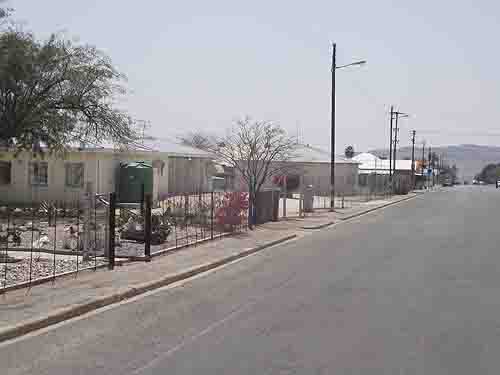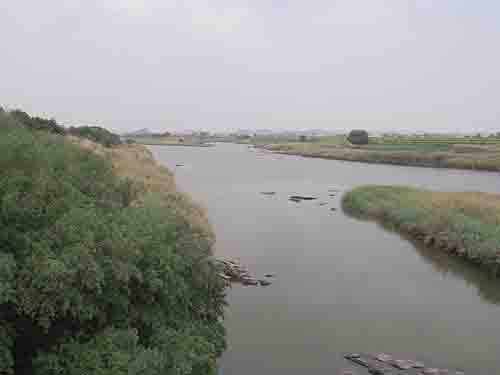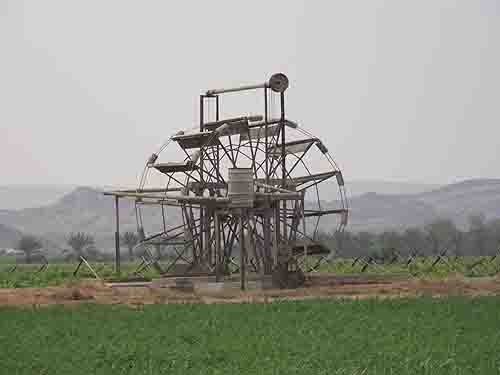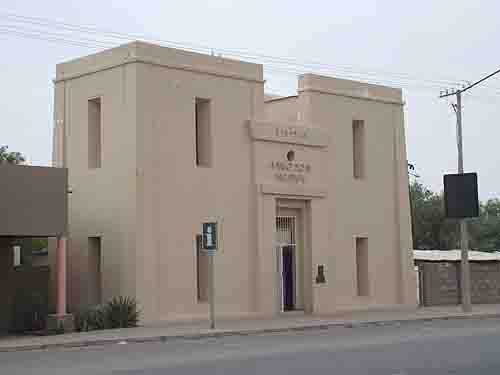On our trip to the Northern Cape we have visited Garies, Springbok,
Port Nolloth and Okiep so far.
In this post I will be covering the drive from Springbok to Pofadder and then onto Kakamas.
Leaving Springbok behind we make our way north eastwards on a dead straight road through a semi desert region where all one sees are rocks, telephone poles and the occasional bird's nest attached to the poles. In this dry region there are no trees, only scrublands and the birds have to make do with what they can find and in this instance it is telephone poles.
There are two types of nest to be seen on the poles, firstly the crows nests which are relatively small compared to those of the weaver birds who build apartments where hundreds of birds live in the nests. I liked the ingenuity of the birds using poles where there are no trees. The authorities however must pull their hair out as these nests cause damage to the telephone lines and when they are sometimes struck by lightning the poles are destroyed as well as the telephone lines.

Pofadder Main Road
Between Springbok and Pofadder there is about 110 kilometres of dead straight road with the occasional hillock on the side of the road. The road is so long and boring that we actually looked forward to arriving in Pofadder just to see some life. In my days in the bank we were always threatened that we would be sent to Pofadder if we did something wrong so that was another reason to visit the town to see what I had missed.
What a disappointment Pofadder was. There were a few houses one shop that I could see and when we stopped outside it the first person to greet me was a local with his hand out looking for money. If there is anything that makes me mad it's people with their hands out looking for giveaways.
In Cape Town at every traffic light there is someone begging and if your doorbell rings it is someone looking for handouts. I thought that out in the desert regions I might get away from these beggars but it was not to be. I was so annoyed that instead of stopping in the one horse town where the horse died a 100 years ago I took a quick drive through and left to drive the next 112 kilometres to Kakamas. Driving the long distances you have to drive in the Northern Cape can be soul destroying as you are lucky if you pass a car going in the opposite direction in the 200 kilometre drive between Springbok and Kakamas.
After two and a half hours on the road we arrived in Kakamas which was an oases in the middle of a desert region. We kept ourselves busy along the way by counting down the mileage on the road signs and comparing them to our speedometer. The authorities must know that people do this and made it more interesting by changing the distances to 9 kilometres between signs and then back to ten, leaving the last 10 kilometres to be travelled being marked as eight. Road signs in Kakamas should not be believed as they are wrong, especially ones which are directing you somewhere. It's a small town but guaranteed as a newcomer in town you will get lost if you follow the signposts.

Orange River
The last 10 kilometres or so of road into Kakamas is quite different from the other 190 kilometres you have just driven. Instead of the brown
and rocky terrain you have had for the past two hours you suddenly have green vineyards on both sides of the road. It comes as quite a pleasant
surprise. Its amazing the difference water makes.
You might ask where in this dry desert region the water suddenly comes from. For those who don't know its from the Orange river,
one of South Africa's longest rivers which flows past Kakamas and which the town's people and farmers get their water from when irrigating their crops.

Canals used to lead water from the river to the vineyards
To get the water out of the Orange river the farmers of old dug tunnels through the mountains and lead water from the river through the tunnels into canals which then lead the water to the where it was required to irrigate the land and vineyards around Kakamas. Crops grown in the Kakamas area are grapes which are used for the manufacturing of wine and raisins. When driving around the town you notice bare concrete slabs some the size of rugby fields which the farmers use to dry their grapes and turn them into raisins. They also produce lucerne and cotton in the region.
There are some interesting things to see in and around Kakamas.

Water wheel
The oldest and most interesting are most probably the eleven water wheels which you will find in the canals. The running water turns the big
wheels which have jug like scoops attached to them and as each jug dips into the water it fills up and moves to the top of the wheel where it
discharges its load as it starts its downward cycle. The discharged water ends up in a smaller canal and runs off to a field where it waters
the crops. All of this is done automatically with no pumps and only using gravity to move the water.
When on holiday in South Africa people always find an excuse to have a braai (barbecue).
I am no exception. Our problem was that we had no meat and had to find some in Kakamas. We went to the local supermarket looking
for lamb chops, the small rib chops you get here in Cape Town. They just did not have them anywhere, and the butchers also did
not know what we were asking for when we told them what we wanted.

Palmhof Chalets our holiday accommodation in Kakamas
Eventually we found something that looked suitable and discovered when we got them home that they were in fact what we were looking
for except that in Kakamas they did not cut the rib chops in half down the backbone like they do in Cape Town. The meat however was lovely,
tender and delicious.

Egyptian designed building used as the Tourist info centre in Kakamas
One of the older buildings in Kakamas is used as the tourism info centre.It is an interesting building built using an Egyptian design.
It is well suited to the area as its design keeps the inside of the building cool even on the hottest day.
A visit to the tourism info office is well worth the effort as the ladies there are only to pleased to tell you about their town
and what there is to see and do in the area.

The Pienk Padstal
Another interesting place to visit is the “Pienk Padstal” (Pink roadstall) where as far as I am concerned they sell a load of old junk.
It however has some interesting things to look at not least the sign post which tells you how deep the water of the Orange river was
when it flooded the area a number of years ago.
The store is approximately two kilometres from the river and the water that ran through the shop was about a metre and a half deep.
It was quite difficult to imagine that so much water came down the river and flooded the buildings so far from the normal course of
the river to the depth it did.
In South Africa wherever grapes are grown there is a wine cellar where one can buy some wines. The cellar in Kakamas is called
the Oranjerivier Wine Cellars and it makes some excellent wines. I enjoy sweet red wines and I found a bottle of red jerepigo
to take home with me. I was sorry that I had not bought a few more bottles but was pleasantly surprised when I found some in a
wine shop here in Cape Town at more or less the the same price that I paid for it in Kakamas.

Another view of Palmhof Chalets
Kakamas has a number of places for people to stay in. We stayed in the Palmhof Chalets which were very nice and had everything we
needed to enjoy our stay including two airconditioning units and did we need those!
The evenings in the Palm Chalets were quite entertaining as they had a security guard who worked night duty and who took his job very seriously.
He had to patrol an area of about 400 metres in length and look after the chalets on either side of a centre square. Religiously every fifteen
minutes he marched up and down his beat checking on the fences behind the chalets and he kept this up all night long.
I nicknamed him “ Die Man van Staal” the man of steel as he made you feel very safe with his continual but unnecessary checking.
I doubt if any other security guard in South Africa would have done his job as well as this guy did.
What I however found strange in the Northern Cape was their security. To me it seemed overdone. Everything is burglarproofed and has
security fences just like here in Cape Town. I would have thought that places
so far off the beaten track would be pretty safe from criminals but it appears not to be the case.
Out of all the towns we visited in the Northern Cape I found Kakamas to be the nicest. It has everything
you want and is close to Upington and also the Augrabies Water Falls which I recommend that you visit if you are passing through this area.
Lookout for my next post which will be on the Augrabies Waterfall.

